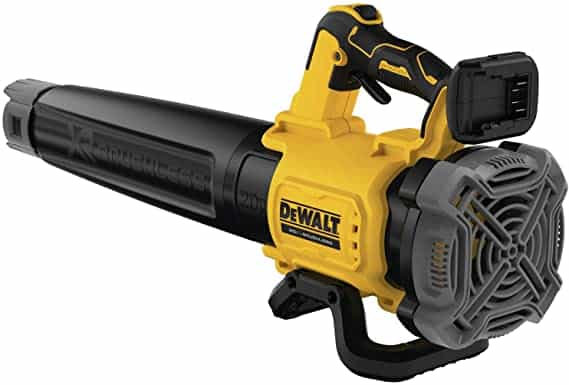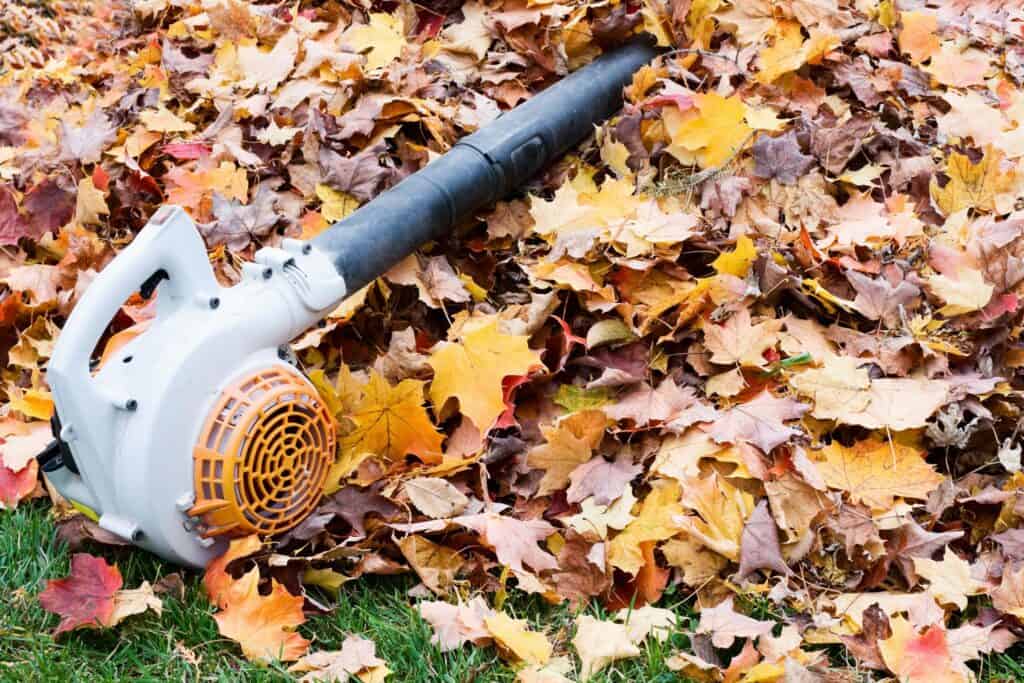Do you have a leaf blower? Do you know how to maintain your leaf blower? And how to clean your leaf blower? Are you asking those questions? In this article, we have already provided you with the answers. If you are interested in buying the item, we recommend you also read about Riding Lawn Mower With Leaf Vacuum,
Clean The Gas Leaf Blower

Your leaf blower’s most crucial components:
Air Filter
Before the air and fuel are combined in the carburetor, the air filter acts as an absorbent to filter the air.,The carburetor’s air intake is where the air filter, a generally rectangular piece of foam, is placed. In the case of a leaf blower, the air filter is essential. Knowing what the air filter accomplishes is crucial for a user.
Carburetor
The carburetor is the component that properly balances the mixture of air and fuel to create combustible gas. The gas/air combinations then enter the cylinder, where they are compressed by the machine’s piston and ignited by the spark plug—another crucial component of a leaf blower.
The carburetor is necessary for the leaf blower to run efficiently.
Gas filter
A filter in the gas tank or fuel tank cleans the gasoline before it enters the engine and ensures that no extraneous particles do. An older jerrycan or gasoline tank may be dirty inside, but the fuel or gas you typically buy at the gas station will be clean. It can be hazardous if dirt gets inside the engine.
Spiking Plug
The spark plug is the element responsible for igniting the fuel and air mixture. Gas-powered leaf blowers’ engines experience this. The spark plug is a crucial component of your machine, and if it is damaged or malfunctions, your leaf blower may not operate at all, will function less effectively, and will wear out much more quickly.

Maintain Your Leaf Blower

How to maintain your leaf blower? Leaf blowers may not be the most sophisticated electrical/gasoline devices, but they do frequently come into contact with leaves, branches, and dirt.
If it is not frequently checked and maintained, this could lead to the unit clogging up or wearing out too soon. Although the upkeep requirements for various leaf blower kinds vary to some extent, the fundamental shapes are largely the same.
However, you should be aware that the maintenance requirements for gas blowers are a bit longer than those for electric blowers, so some procedures that would be applicable for the former might not be applicable for the latter.
There are 5 Tips to maintain your leaf blower:
Examine and purify the air filter (Daily)
A rectangular piece of porous material serves as the air filter, which filters the air traveling through it of dust. By removing the air filter shield or socket and unscrewing it, you can inspect the air filter.
Check the white surface of the air filter after removing it for any black or grayish debris. Replace it in the device after cleaning it with a cloth or dry cleaner.
Examine and correct the starter apparatus (Weekly)
Starters are essential to ensuring that the right flow of electricity occurs and are one of the few electrical parts that can deteriorate over time. Device, tension spring, and cord make up the majority of its three parts.
Check for any accumulation of oil or dirt on all three after unscrewing them from their sockets. Additionally, take notice of the condition of the connections and springs. Wipe off any extra oil if there is any. However, you would likely need to replace the starter component if the springs, etc., are destroyed.
Audit and purge the air filter (Weekly)
The air filter is a rectangular piece of porous material that filters out dust from the air that passes through it. Unscrew the air filter shield or socket, then remove it to inspect the air filter.
Consider whether any black or grayish sediment is present on the white surface of the air filter after removing it. Replace it in the device after wiping it down with a cloth or dry cleaner.
Spark plug, fan blades, and carburetor cleaning (Weekly)
The other two are typical to all leaf blower models, although a carburetor is often only found in gasoline-powered ones. If you have a gasoline vehicle, clean the carburetor first, and then use a dry cloth to wipe the spark plug’s outside.
Go straight to the plug and then the fan if you have an electric blower. To get rid of some of the stickier dirt, you might wish to use canned air. However, stay away from using liquid detergents since they could seep into the electrical parts and lead to problems.
Tank fuel should be changed (Monthly)
This step, which is only necessary for gasoline leaf blowers, makes sure that there is always enough fuel in the tank and that the fuel’s quality is maintained.
Keep the machine off for at least 30 minutes prior to draining the petrol. Fill a container with fuel by attaching a funnel to the tank’s mouth. Send this used fuel to the recycling facility rather than using it for anything.
Connect the funnel to a fresh fuel tank, then carefully pour enough fuel into the tank. To see if the new fuel is being carried adequately, close the tank and run the machine for a few minutes. That are all tips to maintain your leaf blower.
Conclusion
You’ll have a far better user experience if you maintain your leaf blower well and stored. In this manner, your blower will start whenever you need it and won’t degrade with time. Despite having the term “leaf blower,” it may also be used for the snow blower.
Additionally, if you take good care of your blower and keep it well-maintained even when you don’t use it much, it will last much longer.
